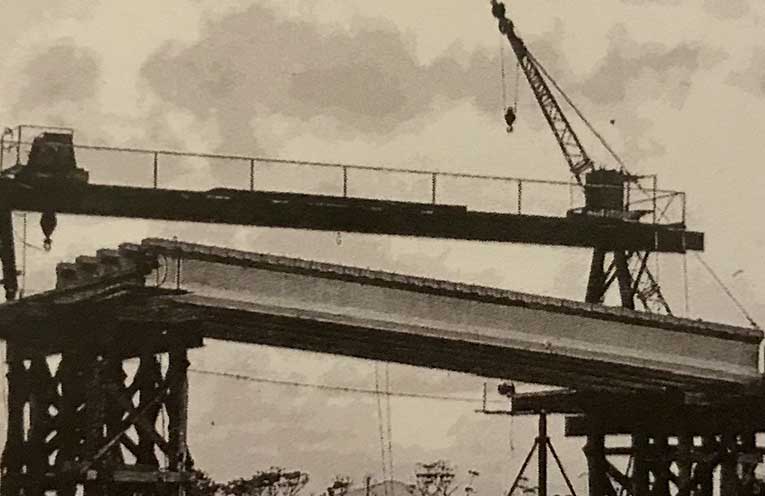
FORTY-SIX years ago on the 6 April, it was a balmy Saturday afternoon and the then Minister for Public Works opened the iconic Singing Bridge forever joining Tea Gardens and Hawks Nest.
 Advertise with News of The Area today.
Advertise with News of The Area today.It’s worth it for your business.
Message us.
Phone us – (02) 4981 8882.
Email us – media@newsofthearea.com.au
It was a big afternoon replete with a sail past, motor floats, decorated bicycles, the school choir, a Scottish pipe band, BBQs and an infamous late night cabaret at Hawks Nest.
The bridge was a major upgrade from the punt service that had started in around 1928.
The punt soon became very congested during peak holiday times.
In October 1961, a deputation met with the Minister and stressed the “urgent necessity” of a bridge to replace the punt.
Bridge building started in March 1972 and cost $1.3m, with a $31k contribution from the local Mineral Deposits company who had operated sand mining leases at Hawks Nest and Mungo Brush since the 1960s.
By 1974, the bridge was completed, replacing the punt.
The abandoned landings remain favorite fishing spots.
The Singing Bridge is a girder construction, made of prestressed and reinforced concrete.
It is 304.3 metres (998 ft) long, with seven 35.3-metre (116 ft) and two 28.3-metre (93 ft) spans.
It carries a two-lane road 7.3 metres (24 ft) wide and two narrow pedestrian walkways 1.2 metres (4 ft) wide.
High water clearance is 10.6 m (34.8 ft) at high water.
Locals tell NOTA that the Singing Bridge was named by Shirley Baron, a long time member of the Progress Association.
The name endures due to the music heard by locals when the afternoon winds blow along the river through the railings.
It sings like a harp.
Locals also tell their children it is compulsory to sing as you drive, ride or walk over it.
Over the years, the harsh coastal environment has resulted in “concrete cancer” and metal corrosion attacking the pedestrian safety railing and anchor points.
The concrete cancer has deepened over time and can cause structural integrity issues.
In addition, the “Singing Bridge” fails to comply with modern design standards.
The pedestrian walkway is too narrow and the safety railing too low.
The $55m MidCoast current roads program has no allocation for any works to the Singing Bridge.
Locals have advised NOTA of increasing concerns about the structural deterioration and safety of the iconic Singing Bridge.
Back in 1977, Tea Gardens school students wrote, “The bridge has made a tremendous impact on local communities and more is to come.”
In 2020, many locals are advocating that it’s time for more now.
(Acknowledgement to Janis Win, Hawks Nest, a Birds Eye View, published 2018).
By Sandra MURRAY




Please search photos of the Broome W.A Jetty walkway that was installed there. Similar could be done here at minimal expense. The pedestrians were never thought of when constructing the Singing Bridge
Thanks Paul